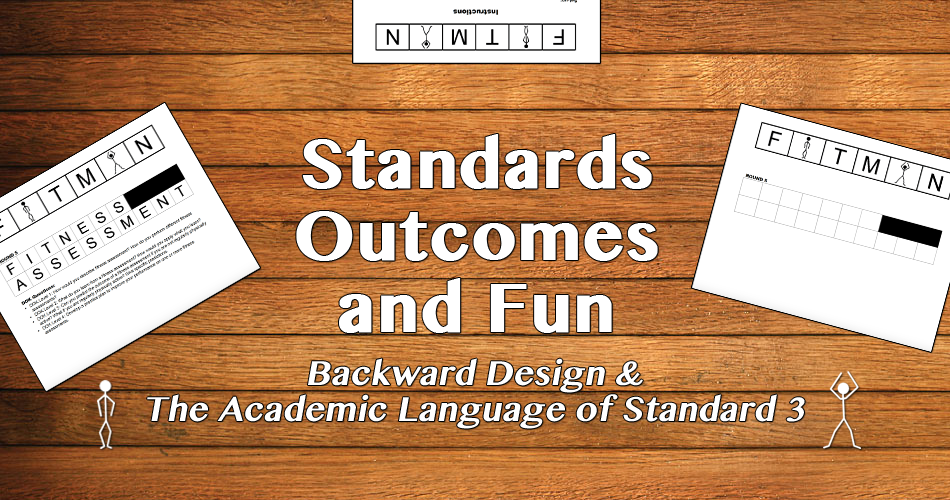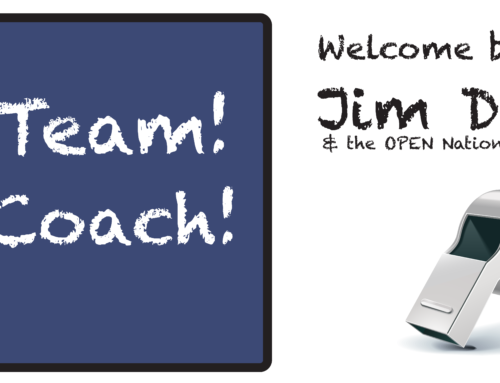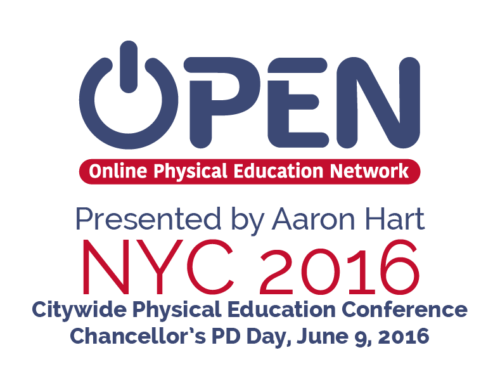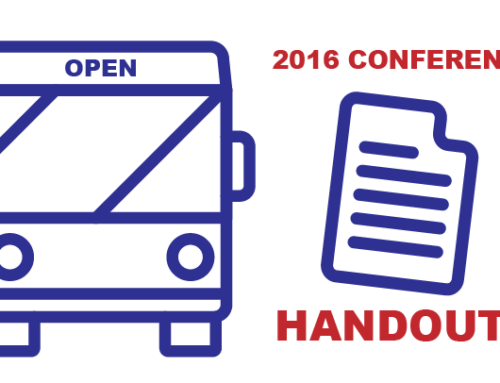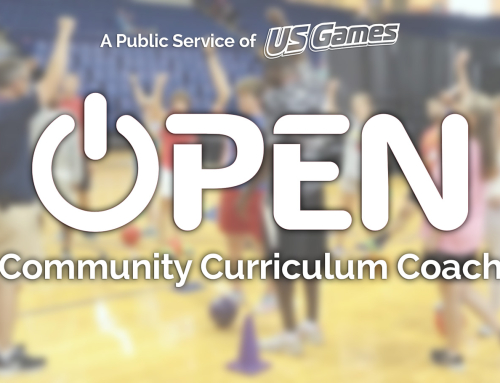Don’t throw out the fun stuff!!!
In conversations that I’ve had around outcomes-based, backward design the single largest stumbling block for teachers seems to be the misconception that backward design means starting over from scratch. “What about the great stuff that I do and that I know kids love? Do I have to throw it all away?!”
In short, NO. If it’s developmentally appropriate, effective, safe and fun, NEVER throw it away. Backward design is simply a planning methods by which teachers set goals BEFORE choosing instructional methods and assessments. Once goals are set, your toolbox of activities and resources should be wide open. In an effort to demonstrate, let me take you through my backward design process using an activity that I know my kids have always loved: FITMAN.
FITMAN to the Rescue!
FITMAN is a variation on the game hangman, but with physical education vocabulary and less violence. The rules are simple; we buy letter guesses by doing a repetition for every open space in our word puzzle. You could do jumping jacks, arm curls, left-handed dribbles, etc. (Detailed instructions and fitness-related games boards are provided free at the bottom of this page.)
Fun idea, but what does this have to do with backward design, outcomes and academic language?
FITMAN used to be a standby activity that I pulled out when equipment and space were limited, or when I wanted to show administrators, parents, or pre-service teachers how to infuse spelling and vocabulary into physical education.
However, as I was reading the outcomes for Standard 3 I realized that I needed a good way to introduce, teach, and discuss the academic language for fitness (my goal was set). FITMAN jumped into my mind and the materials began to take shape. Here’s how I created the structure:
- First, I listed all of the key vocabulary found within the grade-level outcomes.
- Second, I created game boards based on that vocabulary list.
- Third, I created Depth of Knowledge questions to check for developmentally appropriate understanding. (I used these question stems.)
The key to this 3-step process is the fact that I started by reading the outcomes. What this exercise made me realize is that for years I had been relying on what my friend Joey Feith calls, “collateral learning.” I was implementing an activity with blind faith that learning would happen, with no way to recognize or document any real outcomes.
Yes, I was introducing vocabulary, but often times the words I chose were somewhat random – although certainly related to physical education topics. However, backward design makes FITMAN better by giving the activity focus on a clear learning target. Creating DOK questions by design allows me to guide targeted discussion and check for understanding in a truly meaningful way.
OK – that’s it! The materials below all focus on fitness knowledge and National Standard 3. It would be amazing if others would create game boards that focus on other standards and outcomes. If you’re interested in sharing, send me a message on Twitter

